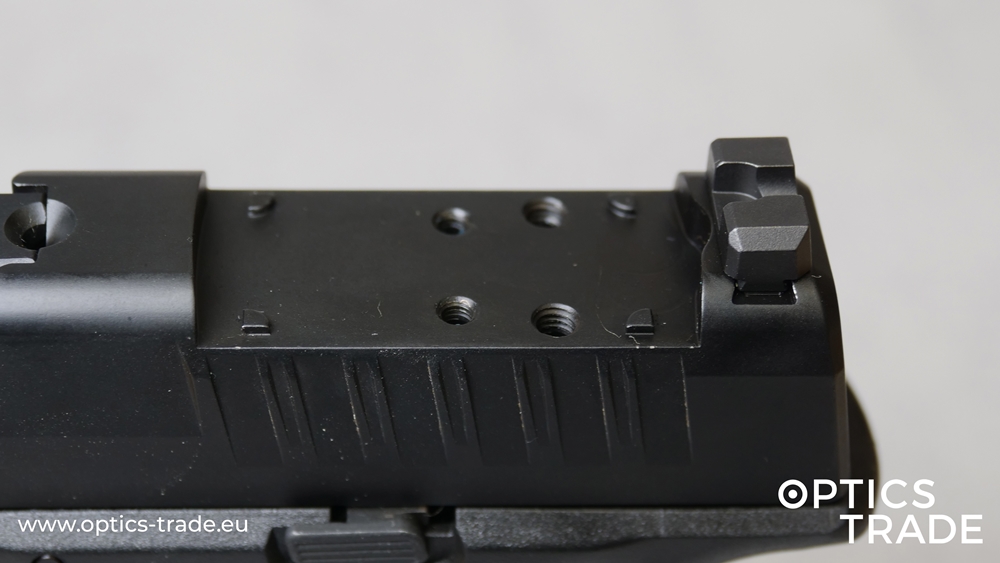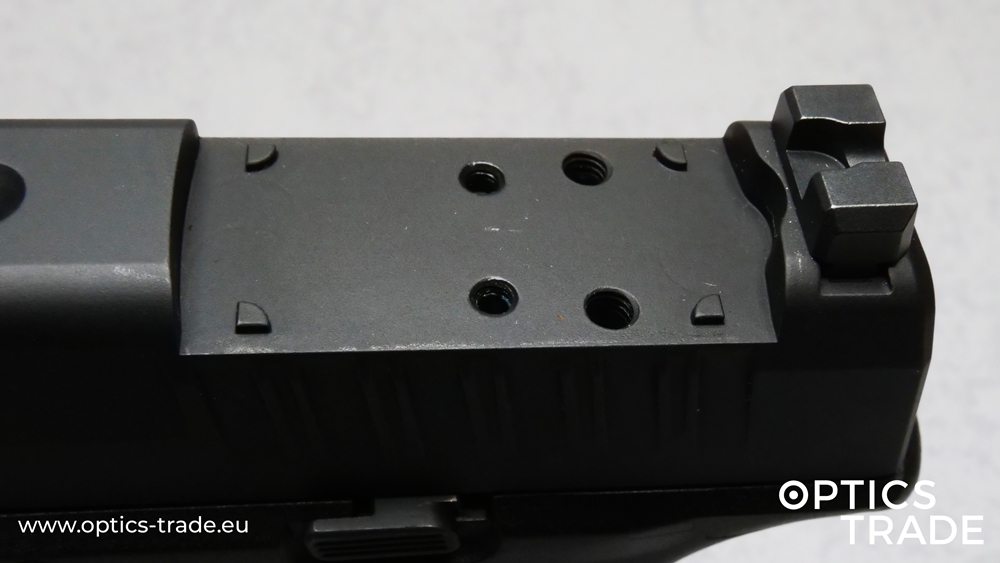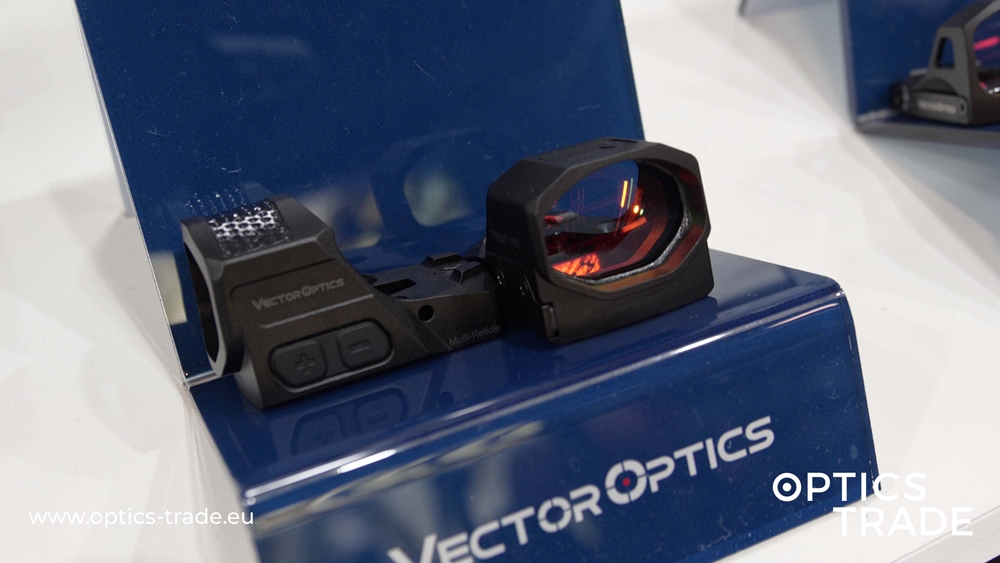Hello, and welcome to another episode of Optics Trade Debates. We continue on our way through explaining the basic attributes of all types of optics and other products that are available on our webpage. This particular episode will focus on magnifiers.
Magnifiers and Red Dot Sights
Let’s start with some basic characteristics of magnifiers. To put it simply, the magnifier is an optical device that enlarges the image. The subcategory that interests us today, however, are the magnifiers that are used in conjunction with red dots. These magnifiers tend to have 30-millimetre tubes. If the user doesn’t have a flip-to-side solution, they can simply use the standard riflescope mounts for 30-millimetre tubes. In practice, that set-up usually means that the red dot has the magnification power of 1x (the image is not enlarged). Red dots are perfect optics for close range application. However, the user will likely encounter a problem at longer distances. It’s really hard to shoot on 150 or 200 metres by relying solely on plain sight. Even iron sights won’t be much of a help. Consequently, the need for magnifiers becomes apparent. Users can now rely on their dot sight with both eyes and turn on the magnifier when 1x magnification no longer suffices. It’s worth noting that magnifiers also feature diopter compensation. That separates them from red dot sights. If the user has poor eyesight or even astigmatism, the diopter adjustment feature will alleviate the problem.
Holographic Red Dot Sights
It’s worth mentioning that the magnifier also magnifies the red dot. But this enlargement isn’t a problem with close distances. The only exception are the holographic red dots. One of the companies that make holographic red dots is EOtech. Vortex Optics makes them too and their Razor AMG UH-1 model is a very popular example of a holographic red dot. In combination with a holographic red dot sight, the magnifier actually shrinks the dot. But in any case, red dots are not meant to be used for the long-range application. Unlike long-range reticles with holdover lines for bullet drop compensation, simplistic circle dot reticles found in red dot sights just aren’t up to snuff on large distances.
Magnifiers and Mounting
Moving on to mounting. The magnifier is always mounted behind the dot. What matters most is that both the red dot sight and the magnifier are both mounted on the rifle at the same height. In other words, the optical axis of the two devices has to be aligned. Magnifiers can be used on all types of red dots. It doesn’t matter if your red dot is of reflex, tube, holographic or some other type. Magnifiers work with every dot sight. The only requirement is that the red dot is mounted high enough that the alignment of both optical axes is possible. To illustrate the point: if you first mount a really compact red dot sight (like a Docter Micro model) too low, it will be difficult to find a magnifier that could be properly aligned with the sight. Magnifiers are mainly used on rifles, especially assault rifles, like the AR platform and even the AKs. They are not meant for pistol handguns since those are typically not mounted high enough. More or less, there are only two available heights with all red dots and all magnifiers. Specifically, the height can be 30 millimetres from the Picatinny rail to the centre of the red dot or the magnifier unit. This is why some manufacturers sell magnifiers with a kit for two different heights. That way, you’re always able to choose the appropriate height, depending on the red dot.
Centring of Magnifiers
There’s something else to pay attention to when it comes to mounting. You can finetune the central alignment of the magnifier once it is mounted behind the red dot. The centring is done with small screws. The screws are located on the top and on the side of the magnifier. That’s rather similar to the turrets on riflescopes. The aim is to get the red dot into the centre of the field of view. It’s important to point out that not all magnifiers have this feature. The price of the product has little to do with it either. So be sure to check if the magnifier can be centred before making a purchase. Admittedly, this feature is not crucial but it’s just aesthetically pleasing to align the dot into the centre of the FoV. To sum up, what matters most when mounting the magnifier is the proper height and alignment.
Mounting Solutions
Now it’s time to talk about mounting solutions themselves. In the past, there were many mounting solutions that could just connect the magnifier to the rail. When the user no longer needed image magnification, they would remove the magnifier and store it in their pocket. In contrast, modern customers prefer flip-to-side magnifiers. That means using a magnifier that is always connected to the rail but the device can change positions. When the magnifier is in a vertical position, the unit is in use in combination with the red dot. The user can flip the magnifier to the side with bare hands, and when in the field. Once the magnifier is flipped to the side, it does not obstruct the user’s line of view. The flip-to-side mounts are now the standard. With switching between using only the red dot and combining it with a magnifier, users are able to make a seamless change between short and long-range shooting situations. If you’re a right-hander, flip the magnifier to the right side. That way both of your eyes remain free to see the entire field of view. Left-handers need magnifiers that can be flipped to the left side.
Magnifiers and Magnifications
We talked about the magnifications of red dots already. But what about magnifiers? The golden standard at the moment is 3x magnification. If the magnification power is above 3x, the dot is too enlarged to be useful. But that doesn’t mean that there are not bigger magnification powers available on the market for customers who may need it. For example, 6x magnifiers are rather common, making it possible to shot at larger distances.
Removing the Magnifier
The flip-to-side feature is now a standard among this kind of optics. But there are still some solutions where the user has to first completely remove the magnifier from the rifle completely. The obvious question when you’re out in the field is – where do you put the magnifier once it is no longer needed? Nobody wants to carry such a precious device around in their pockets or leave it on the ground. There’s just too much risk of losing it. Flip-to-side magnifiers are clearly the most practical and reliable solution. That’s why even the really affordable options like the Falke B3X Magnifier come with a flip-to-side mechanism attached to the optic. This type of mount can be disengaged by pulling back the magnifier and flipping the unit to the side. Some manufacturers like Vortex use the button mechanism. Sightmark models, for example, require a little bit more force to flip the magnifier.
The prices of magnifiers vary a lot. There are many cheap options on offer, while combat-tested magnifiers are much pricier. Of course, with the uptick in prices, the optical capabilities improve significantly.
This is everything for today. Thank you for your attention. Please like and share this video if you found it useful. If you have any questions or feedback, feel free to send us an email or leave a comment in the section below. We love to help. Subscribe to our YouTube channel for more content. See you next time!
Products mentioned:
Magnifiers: https://www.optics-trade.eu/en/dot-sights/magnifiers.html




